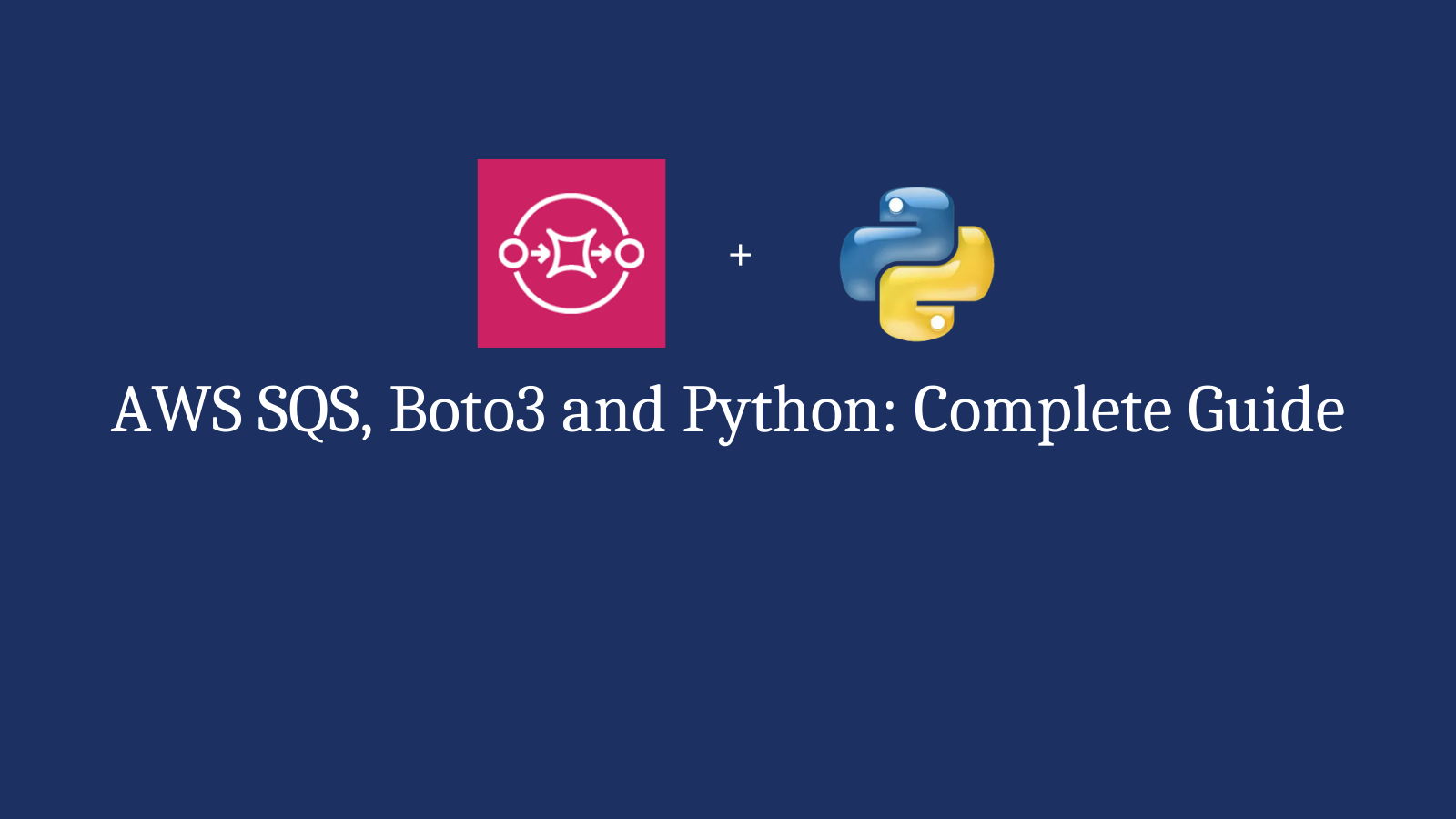

Run the following command to create a queue named localstack-queue:

To create an SQS queue, use the CreateQueue API.
Create an aws sqs queue using boto3 how to#
We will demonstrate how to create an SQS queue, retrieve queue attributes and URLs, and receive and delete messages from the queue. Start your LocalStack container using your preferred method. This guide is designed for users new to SQS and assumes basic knowledge of the AWS CLI and our awslocal wrapper script. The supported APIs are available on our API coverage page, which provides information on the extent of SQS’s integration with LocalStack. LocalStack supports SQS via the Community offering, allowing you to use the SQS APIs in your local environment to integrate and decouple distributed systems via hosted queues. SQS allows you to reliably send, store, and receive messages with support for standard and FIFO queues. It allows you to decouple different components of your applications by enabling asynchronous communication through message queues. Simple Queue Service (SQS) is a managed messaging service offered by AWS. Get started with Simple Queue Service (SQS) on LocalStack Accessing a resource created by LocalStack.Accessing LocalStack via the endpoint URL.Patched AWS SDKs for Lambdas (Deprecated).Getting started with the Cloud Pods CLI.Managed Workflows for Apache Airflow (MWAA).Returns the URL of an existing Amazon SQS queue. Note – In this example, we are using boto3.client object. To get the SQS queue URL, you need to use the get_queue_url() method from the Boto3 client library. If no filters are specified, by default, the returned Queue collection will include all resources. The filter() method returns a List object containing all the filtered resources. QueueNamePrefix : A queue name prefix to use for filtering the list results.Optional parameters used in the above example: Logger.exception(f'Could not create SQS queue - :') Response = sqs_resource.create_queue(QueueName=queue_name, Sqs_resource = boto3.resource("sqs", region_name=AWS_REGION)ĭef create_queue(queue_name, delay_seconds, visiblity_timeout): import loggingįrom botocore.exceptions import ClientErrorįormat='%(asctime)s: %(levelname)s: %(message)s')

These queues can handle an unlimited number of transactions (SendMessage, ReceiveMessage, or DeleteMessage API calls) per second. Standard SQS queues are the default type of queues. To create a standard SQS queue, you need to use the create_queue() method from the Boto3 resource. An SQS queue works like a buffer between the application components that receive data and those components that process the data in your system. Sqs_resource = boto3.resource("sqs", region_name=AWS_REGION) Working Boto3 SQSĪmazon SQS provides an HTTP API over which applications can submit and read messages out of a messaging queue. Likewise, you can instantiate the Boto3 SQS resource: import boto3 Sqs_client = boto3.client("sqs", region_name=AWS_REGION) Here’s how we can instantiate the Boto3 SQS client to start working with Amazon SQS APIs: import boto3 For more information on the topic, take a look at AWS CLI vs botocore vs Boto3. The resource allows you to use AWS services in a higher-level object-oriented way.For example, you can get access to API response data in JSON format. The client allows you to access the low-level API data.The Boto3 library provides you with two ways to access APIs for managing AWS services: Batch messages for future processing ( Working with AWS Batch in Python using Boto3).Allocate tasks to multiple worker nodes.Decouple live user requests from intensive background work.FIFO queues: FIFO queues are intended to guarantee that messages are processed precisely once, in the exact order they are sent.Standard queues: Standard queues provide maximum throughput, best-effort ordering, and at least one delivery.

SQS queue messages can contain up to 256 KB of data in any format such as JSON, XML, etc. What is an SQS queue?Īmazon SQS is a fully managed service, making it an excellent choice for communication between independent systems and a reliable way to submit and receive messages from the queue. In general, here’s what you need to have installed:Īlternatively, you can use a Cloud9 IDE. To start interacting with Amazon SQS programmatically and making API calls to manage SQS queues, you have to configure your Python environment.


 0 kommentar(er)
0 kommentar(er)
